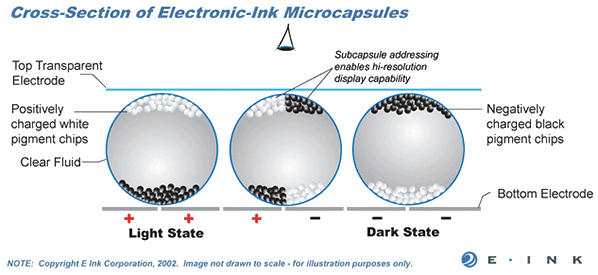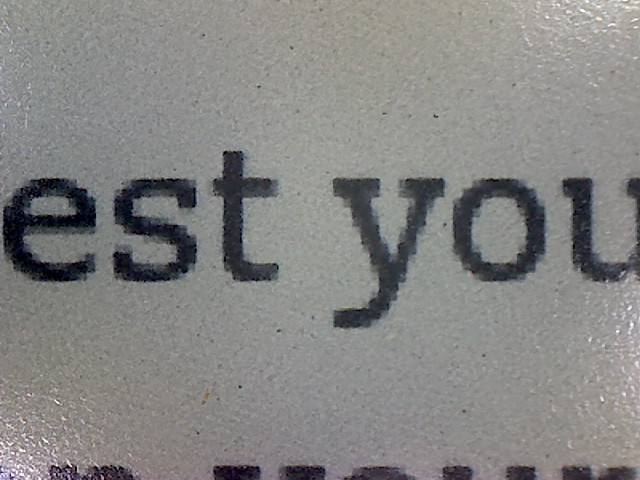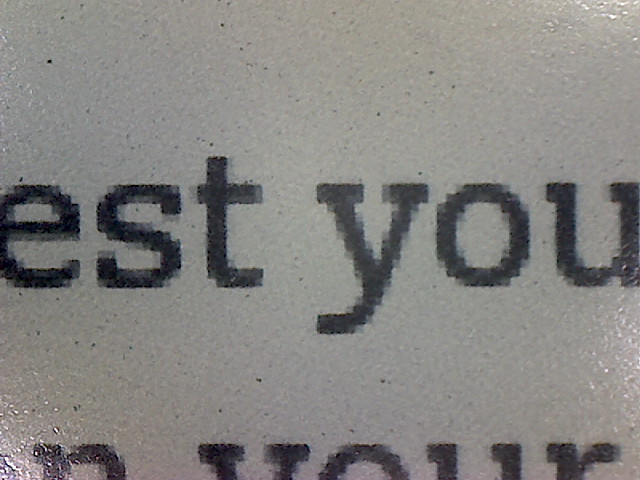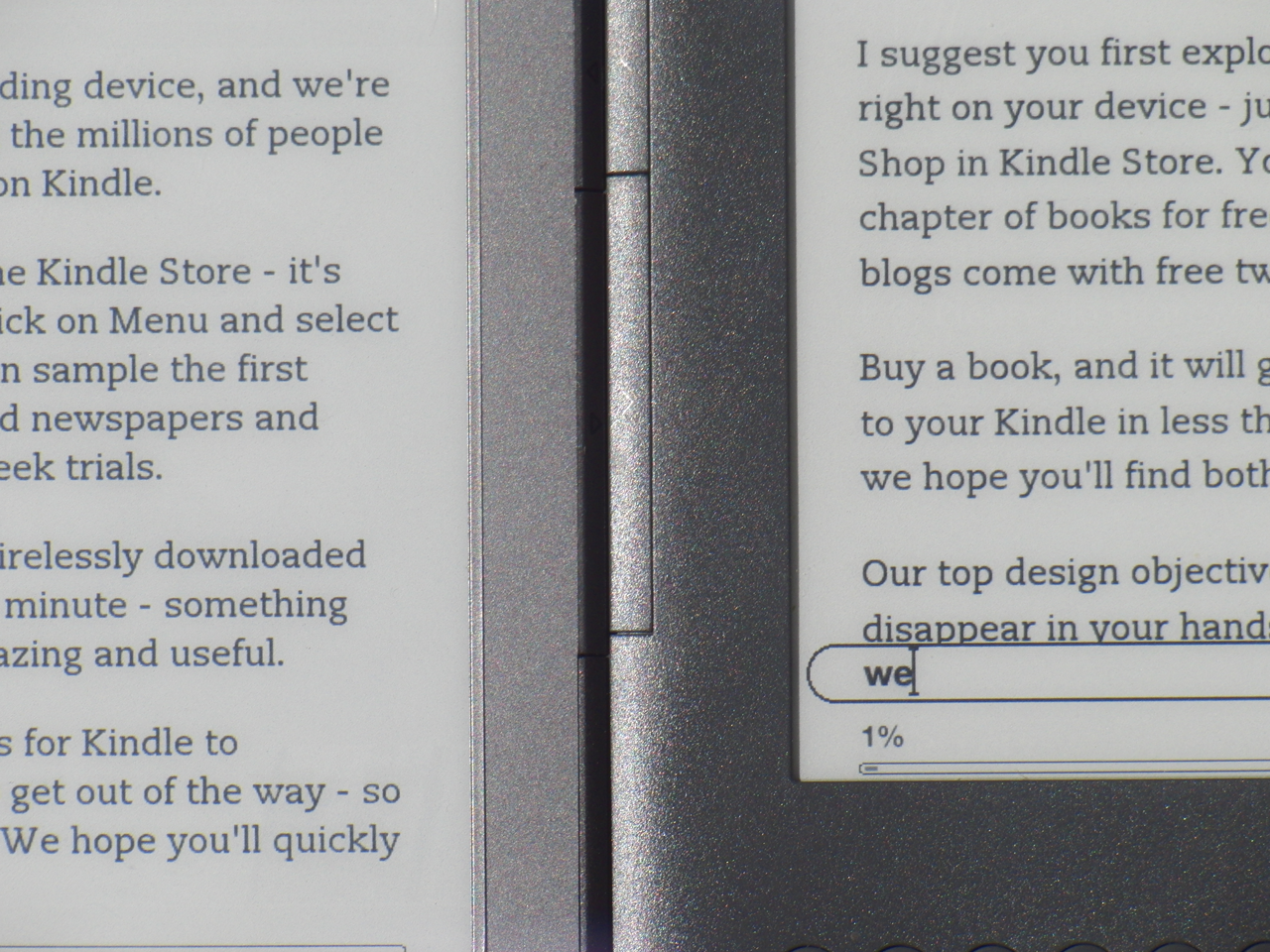Hands-On: Amazon's Fourth-Gen Kindle Refresh
The Display: Lower Price, Lower Quality
There's no question that electronic ink technology is completely different from what you seen from an LCD monitor. However, the first stage of E Ink's electronic paper screen production is essentially the same. There's a matrix similar to what you'd find in a computer display, except that E Ink covers that with a layer of transparent microscopic capsules that contain viscous fluid, along with positively-charged white pigments and negatively-charged black pigments.
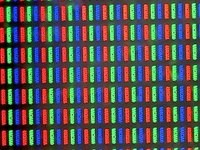

For an e-book reader, the benefits of E Ink technology are obvious because image quality is independent of viewing angles and lighting conditions. It's truly like reading a pad of paper. Better yet, power is only consumed when the screen changes, like when you turn a page. That makes the battery life of an e-book reader nearly 100 times greater than that of an LCD-based tablet or mobile phone.
According to its spec sheet, Amazon is using the same 6" E Ink 16-level gray scale display (600 x 800 pixel resolution at 167 PPI) on the third- and fourth-gen Kindles. After using the new silver Kindle for a few hours, though, it felt like I was reading text on an inferior screen.
Turning on our microscope, text on the fourth-generation Kindle appears more dithered around the borders. Meanwhile, text on the Kindle Keyboard is slightly sharper, and the black is a little darker (focus on the "y" and "o" in the pictures).
We called up E Ink Corporation to ask if this was a batch-related issue, and was told that this is most likely due to Amazon choosing a particular grade of display panels. So, while the new Kindle comes at a lower price, the company is probably cutting its costs as well by using a slightly cheaper display.
Get Tom's Hardware's best news and in-depth reviews, straight to your inbox.
Current page: The Display: Lower Price, Lower Quality
Prev Page Keyboard-Less Navigation And Screen Rotation Next Page Kindle Special Offers-
Nim Chimpsky "Amazon is claiming faster page turns... Overall, we don't see any change in performance." Maybe they were hoping for the placebo effect.Reply -
slicedtoad still using a 1st gen kindle. Kinda slow page turns and not the greatest contrast but it still reads better than a physical book (cause it's lighter).Reply
And e-readers shouldn't be compared to tablets, the only similarity is the physical form. e-readers allow you to read long books without straining your eyes anymore than with paper. Tablets on the other hand do a large number of things (of questionable usefulness) but reading anything more than a newspaper is hard on the eyes. -
CorusMaximus Could you guys test them against large PDF files? As a grad student that is what I would be seeing quite a bit of.Reply -
acku CorusmaximusCould you guys test them against large PDF files? As a grad student that is what I would be seeing quite a bit of.You mean a page speed test with large PDFs?Sure, we can do that. Check back tomorrow.Reply
Cheers,
Andrew Ku
TomsHardware.com -
Saulot To the extent that I am interested in an e-reader, it is because I don't want to do my reading on an LCD. However, it is disappointing that Amazon seems to have cheapened the display quality on this model. Probably won't be a buy for me.Reply -
interfan7 Well if Amazon claims in advertisements that it is the same 6" e-ink screen and we find out it is not, it damages Amazons' reputation in my opinion. Personaly I'm starting to feel disappointed and won't buy it.Reply
If TomsHardware is correct clients should know about it.
If the touch versions cames with a screen in the same quality like the 3rd generation, then there is a chance I will buy it.
They should have added $10-$15 for a unit and use a good panel. -
tipoo 20 more dollars for much easier typing/navigation and double the battery capacity. I'm not seeing the appeal in the lowest end one, the Touch seems to be the way to go.Reply -
As a matter of argument the K3 refreshes EVERY page turn whereas the K4 comes defaulted to refresh after a few page turns. That can make a big difference between displayed screens even on the same K4. To test it where it is apples to apples, you need to install FW 4.0.1 on the K4 and set the page refresh to EVERY page. Otherwise your tests are skewed and totally meaningless.Reply
-
dark_knight33 Videos on the last page are kinda lame quality, particularly the ipad input lag. I'm not even sure what I'm supposed to be looking at there.Reply
As a Kin 3rd gen owner, I'm happy that my device is still superior, and don't feel a bit bad about the extra money spent on it. I don't know what the sweet spot price is they are trying to achieve, but $100 seems like more than a bargain for an e-reader. People that want to spend less money than that for a "book replacement", probably don't buy many books anyway. ;-)
